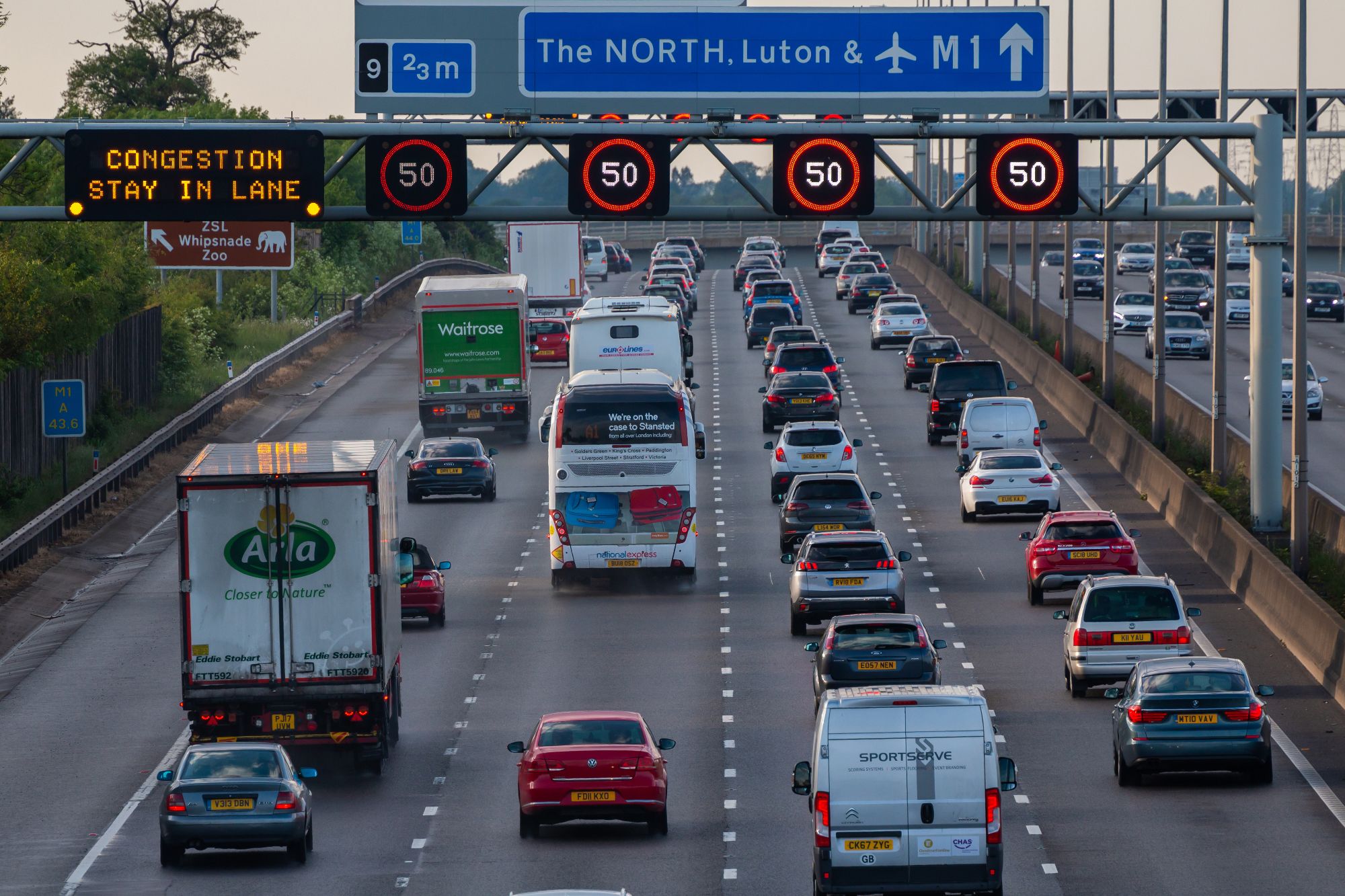Driving On A Motorway
Driving On A Motorway
ADI Part 3 Mototrway Driving - Now until you have your green badge, you cannot take learners on a motorway - But when you have, How do you teach them? What do you show them?
More than a third of drivers rarely, if ever, drive on a motorway. If that’s you, you may find motorways daunting or may be unfamiliar with some of the recent innovations.
Motorways can be a daunting prospect for new drivers. Most learners don't even go on the motorway until they've passed. To be fair, at first glance they can seem complex and intimidating. You might be surprised to learn, then, that they are some of the safest roads to drive on. In fact, many people find driving on motorways easier than using other roads.
Did you know as a learner you are allowed on the motorway, if you are with a full qualified driving instructor and using a dual controlled car?
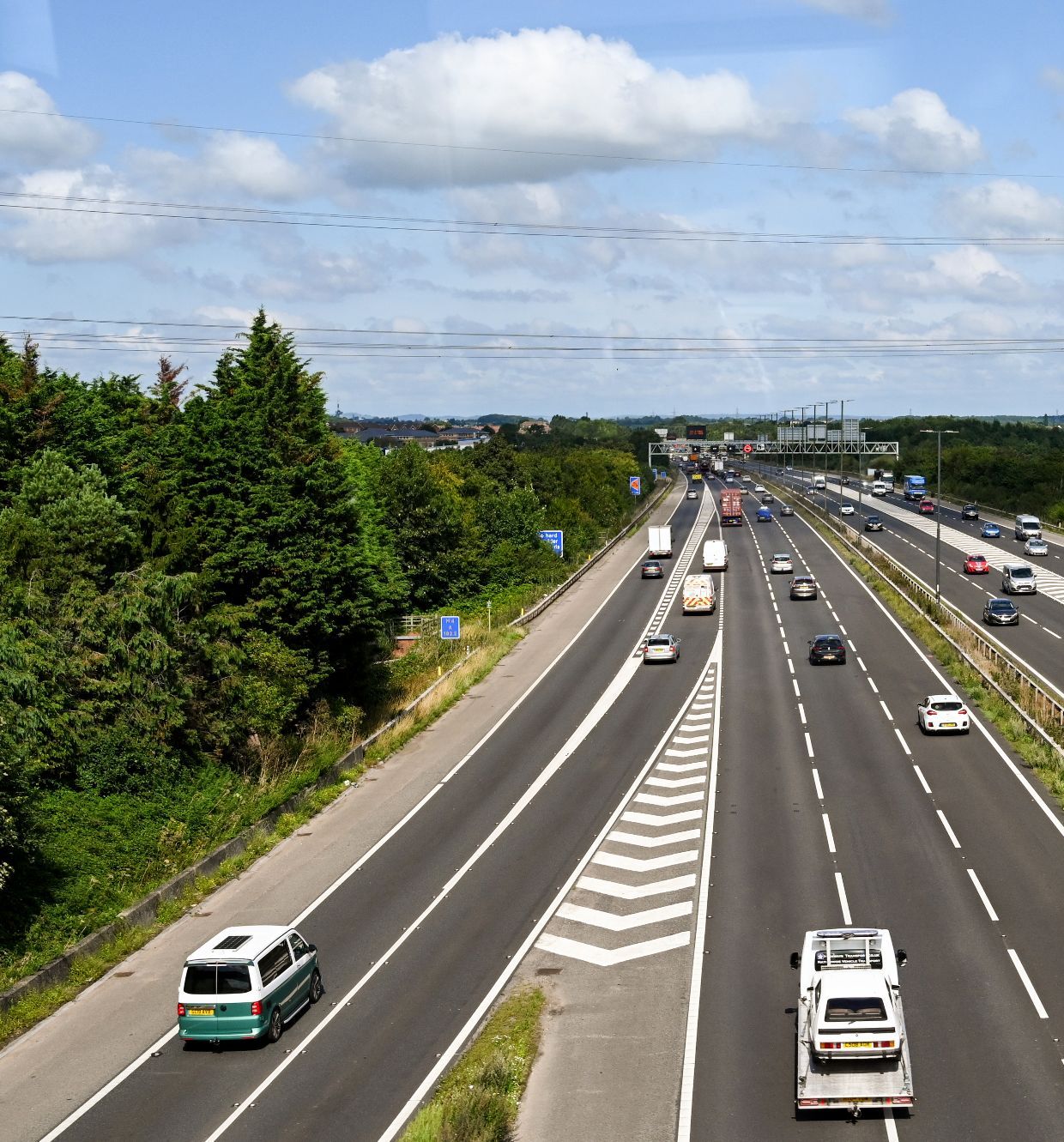
Joining a Motorway
You enter motorways via slip roads. These short roads give you time to build up your speed and find a gap between vehicles where it is safe to join. At no point should you stop or reverse on a slip road.
It's important to give priority to vehicles already on the motorway—though cars will usually be ready to move over and allow new traffic in when they see slip roads joining.
Sometimes slip roads merge with the motorway and become the left lane. In these scenarios you need to build up your speed to match that of the motorway traffic, but you don't need to worry about slotting into other lanes.
Using The Correct Lane On A Motorway
The main thing to understand when it comes to motorway driving is which lane you should be in.
The most common motorway gripe you will hear from experienced drivers is about people 'hogging' the middle lane. This is because, in the simplest terms, the middle and right lanes of a motorway are for overtaking.
When overtaking at such speeds, be sure to use your mirrors and indicate clearly.
If there is no traffic ahead of you, stay in the left lane. Obviously you should always stick to the speed limit, but heavy goods vehicles and cars with trailers frequent the left lane and may force you to slow down.
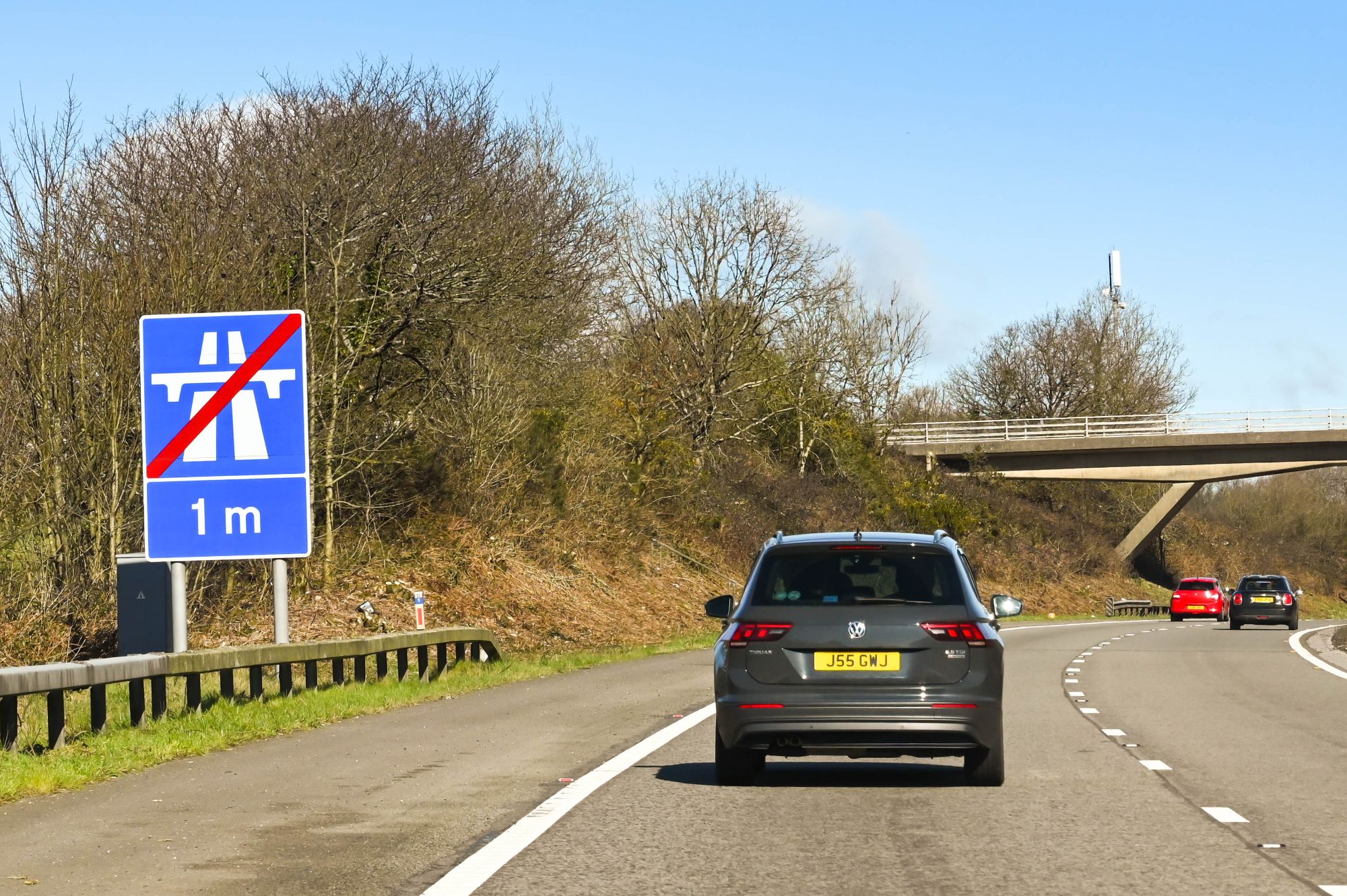
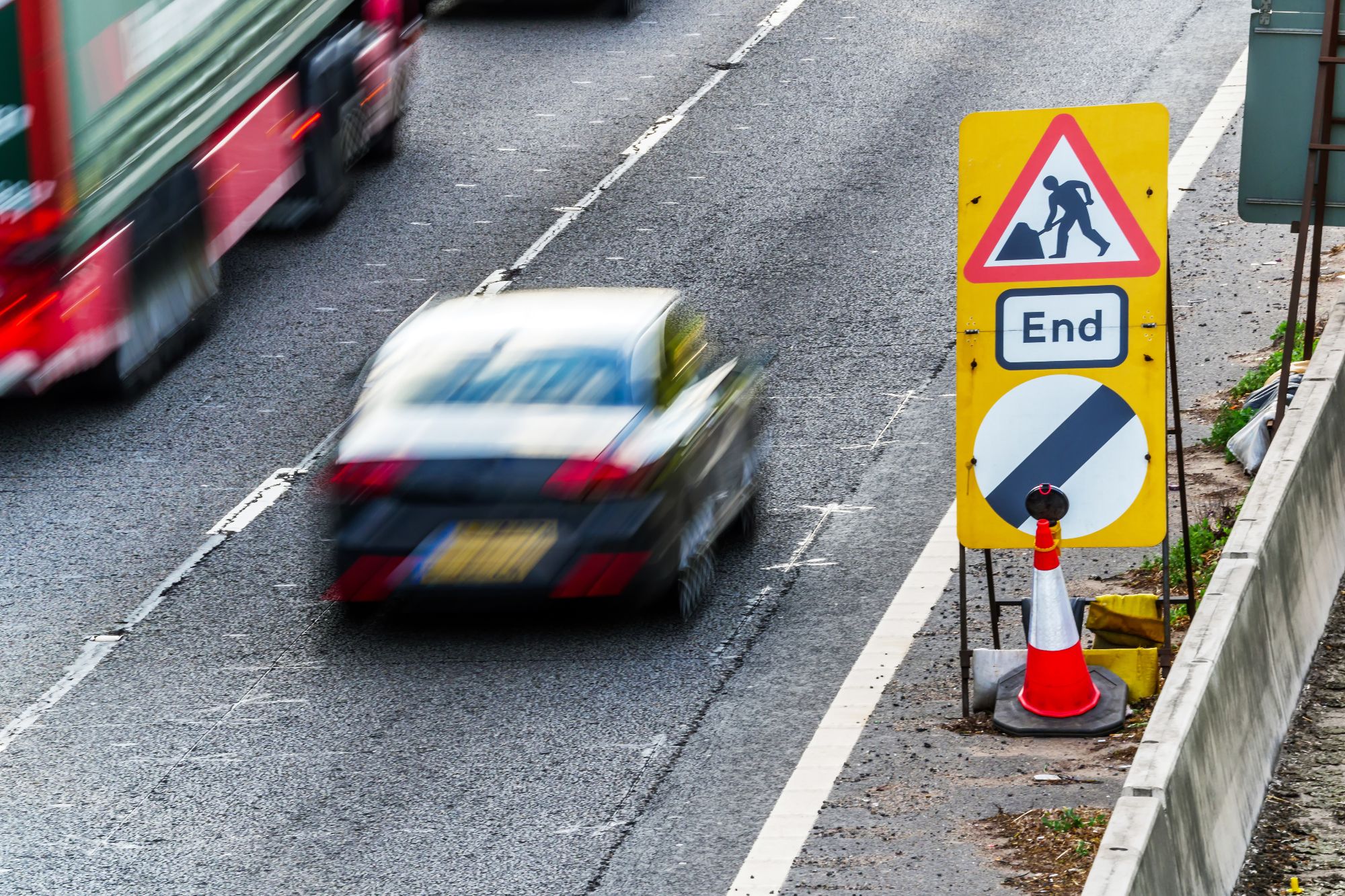
Motorway Driving Rules
Highway Code
The main rules that separate motorways from regular roads (aside from the speed limits) is that walking, picking up or dropping off of anyone on them is illegal—unless it is an absolute emergency. This is for obvious safety reasons.
When you can see well ahead and the road conditions are good, you should
- drive at a steady cruising speed which you and your vehicle can handle safely and is within the speed limit
- keep a safe distance from the vehicle in front and increase the gap on wet or icy roads, or in fog
Identifying a Motorway
You can identify motorway signs by their blue backgrounds. These will appear on the approach to motorways (usually as part of larger signs) and then frequently along the carriageway itself.
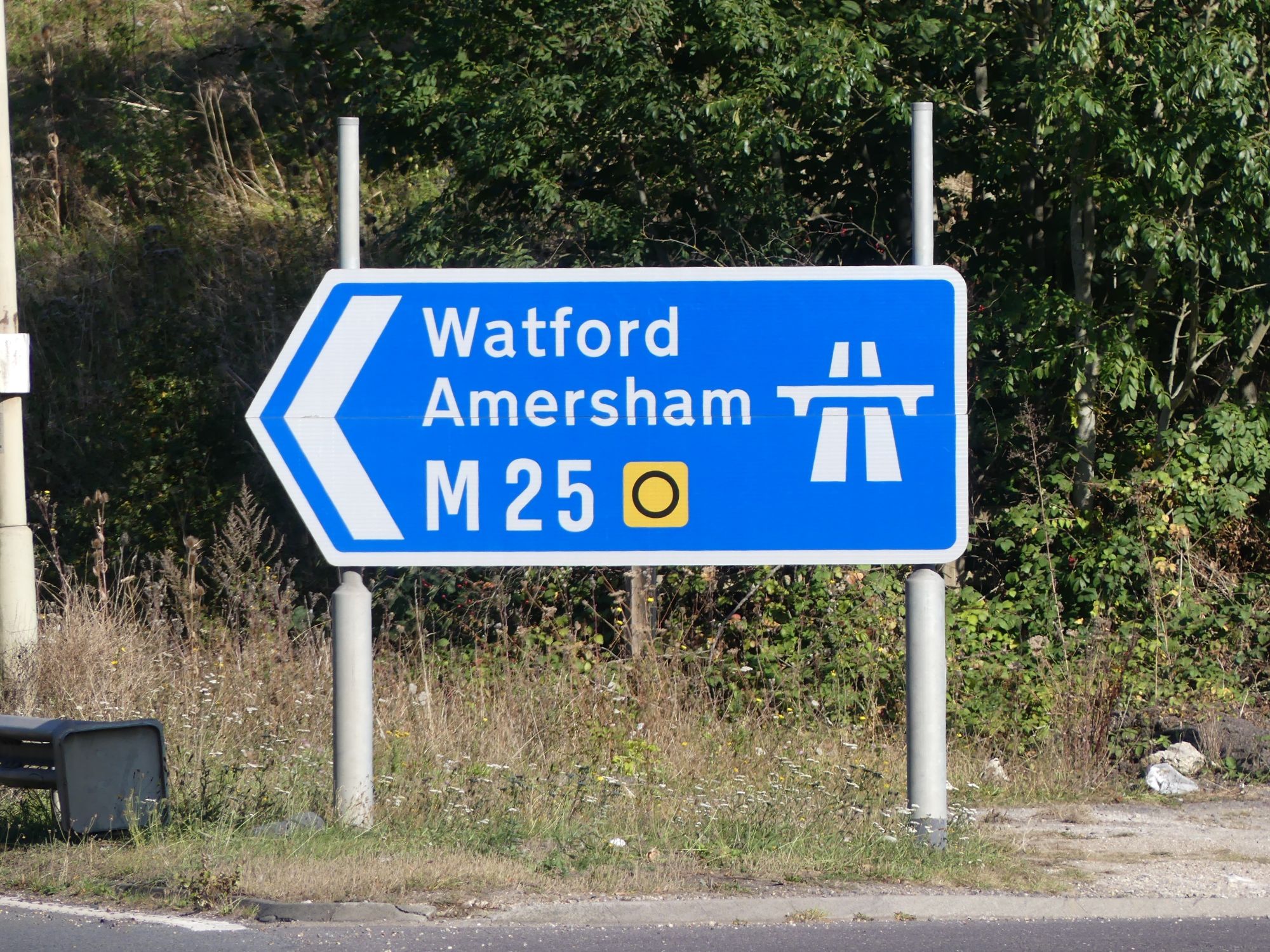
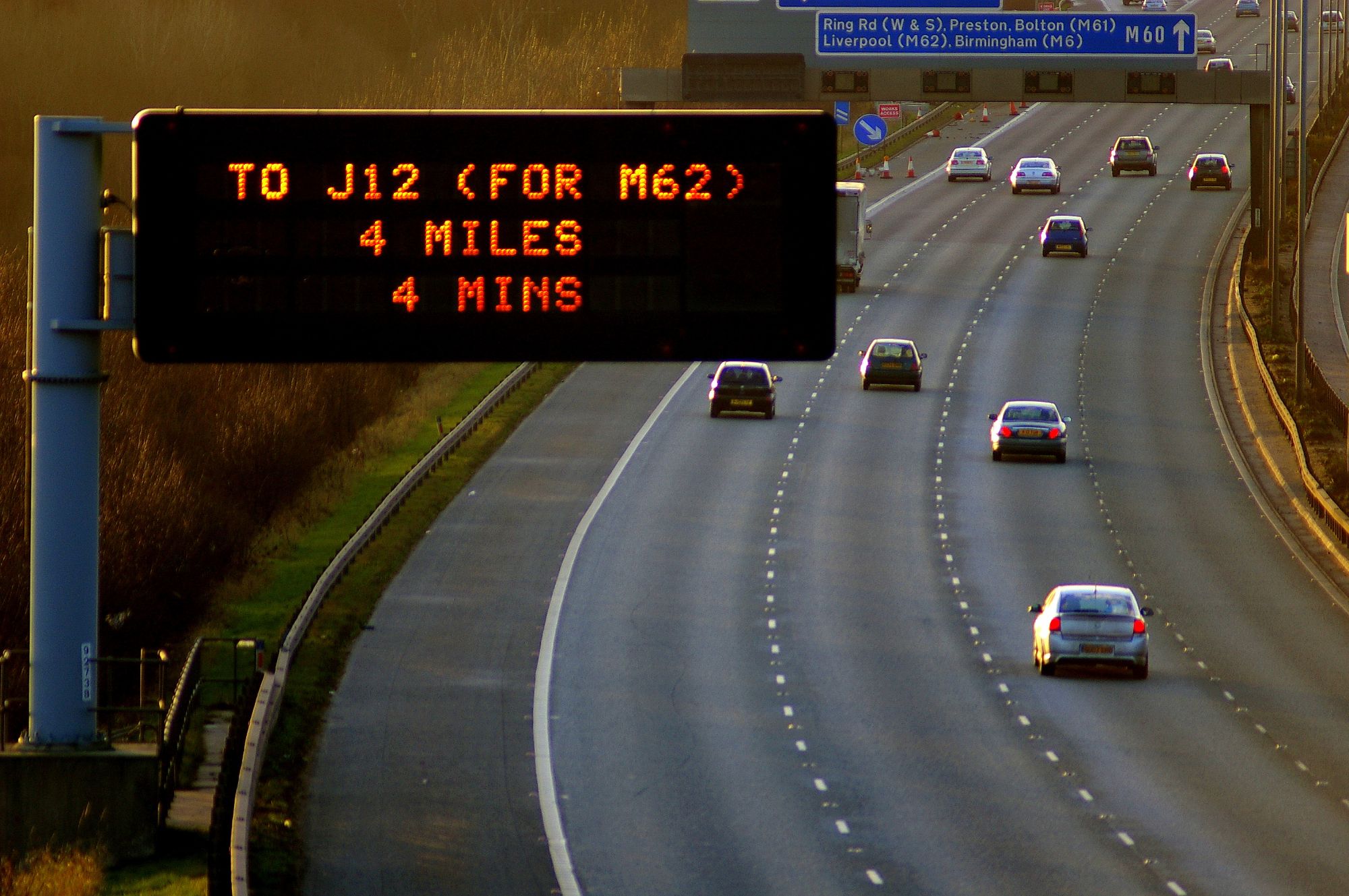
Warning Signs On A Motorway
If at any point you see amber flashing lights, this means there is a hazard of some kind that you need to be aware of. Maybe there is an accident ahead, or particularly heavy fog that day that could obstruct your view. If you see a red 'X' above a lane, it means that this lane is closed and you should not be using it.
Lines on motorways are clear and defined. You will see broken white lines between lanes and at points on the carriageway where slip roads appear. This indicates that you can cross these lines—either to overtake or leave the motorway.
However, if you see a continuous solid white line, you should not cross it. On motorways, this is mostly used to indicate the hard shoulder.
Motorway Hard Shoulder
On classic motorways, there should be no stopping or driving on the hard shoulder unless it's an emergency or you are instructed to do so by police. It is incredibly dangerous to stop on the hard shoulder, as traffic passing by is moving incredibly fast and drivers may not notice you until the last minute.
If you find yourself in a situation where it is absolutely necessary to stop here, be sure to exit your vehicle and wait away from the road for help. Hard shoulders are equipped with emergency phones at regular intervals so try to park near these points, if possible.
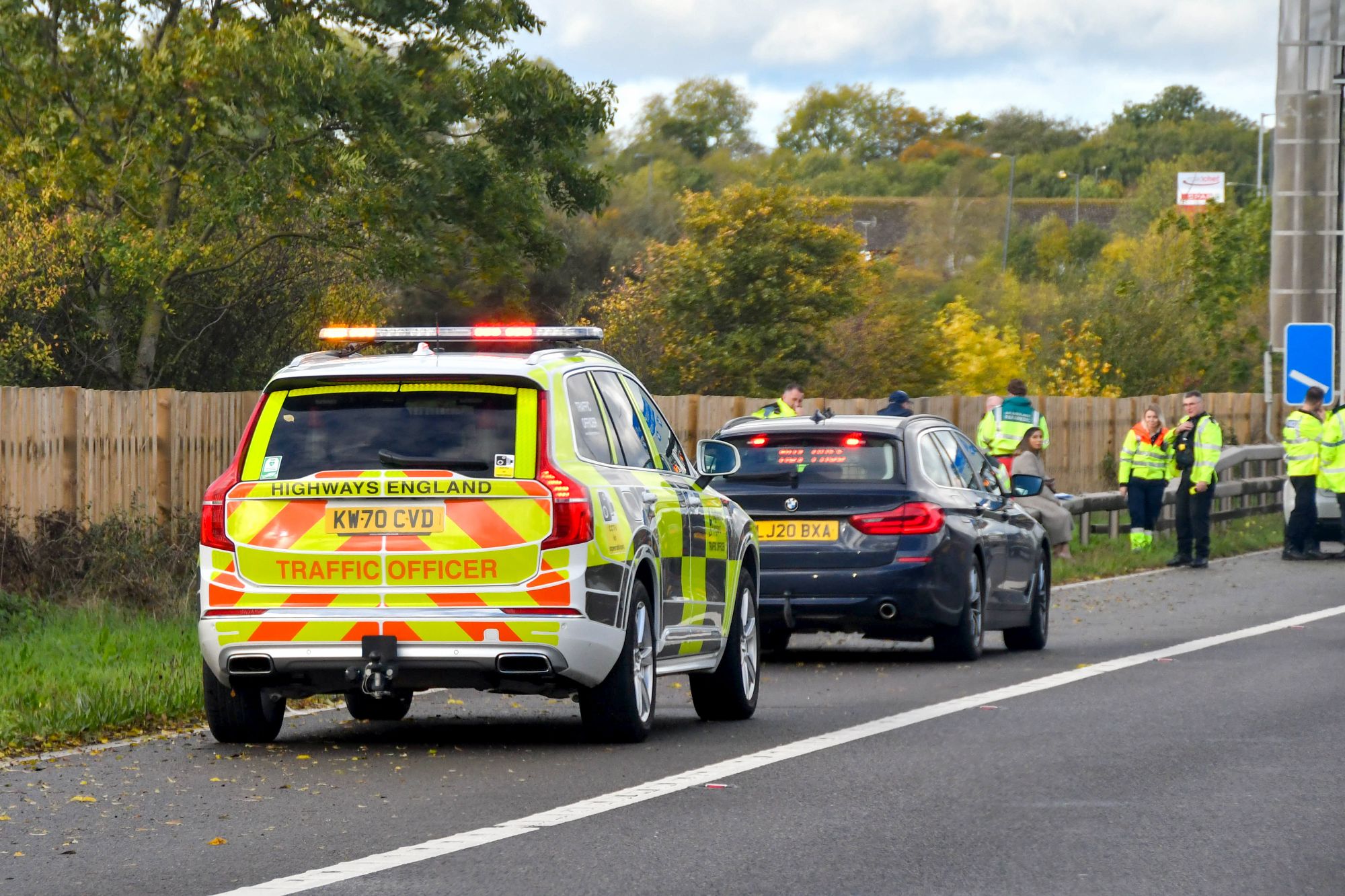
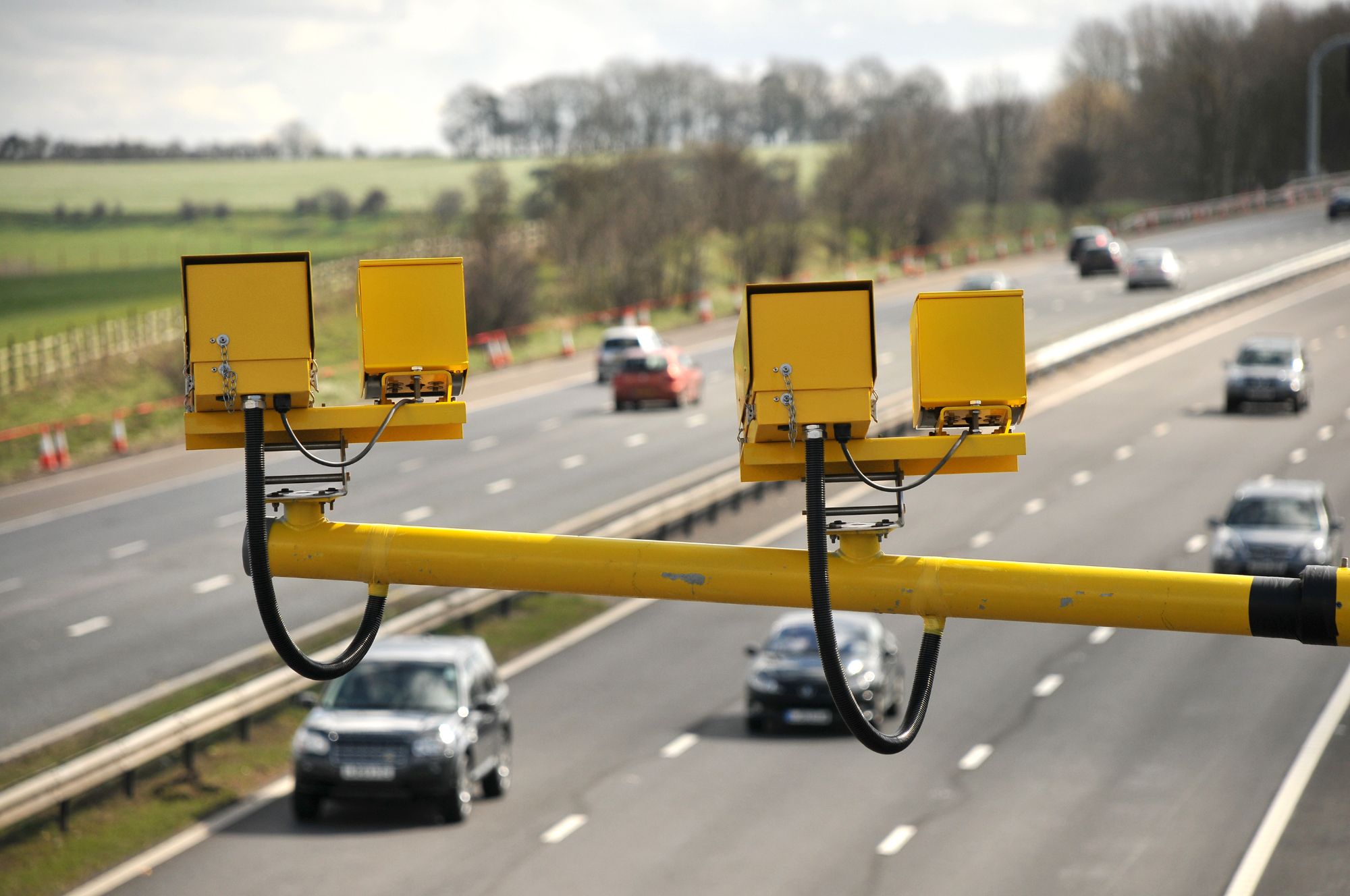
Speed Limit On A Motorway
The legal limit on UK motorways is the national speed limit: in this case, 70mph. You will notice that some people will be driving over or under this speed.
The limit is there for a reason—high speed means you have little time to react to hazards and accidents can be catastrophic.
When authorities have already detected hazards or delays, you may see temporary speed limits imposed on motorways. These will be marked above each lane in red or amber lights. This kind of technology and flexibility is particularly prevalent on new, so-called smart motorways.
Using a Smart Motorway
Motorways utilising technology to actively control traffic were introduced to stretches of UK motorways in 2006.
The technology is mainly used to adjust speed limits in reaction to developing hazards. They can also implement opening up the hard shoulder as an extra lane, with the aim of easing congestion and promoting a steady flow of traffic.
On smart motorways you should follow instructions on the gantries (the signs on the bridge-like structures above the road) as your journey progresses.
You may wonder, with the hard shoulder being used as a lane: what would happen in an emergency where you need to pull over?
Smart motorways aim to have emergency refuge areas dotted every 500m or so along the carriageway. They also intend to reduce the number of accidents by using extensive signage and CCTV coverage.
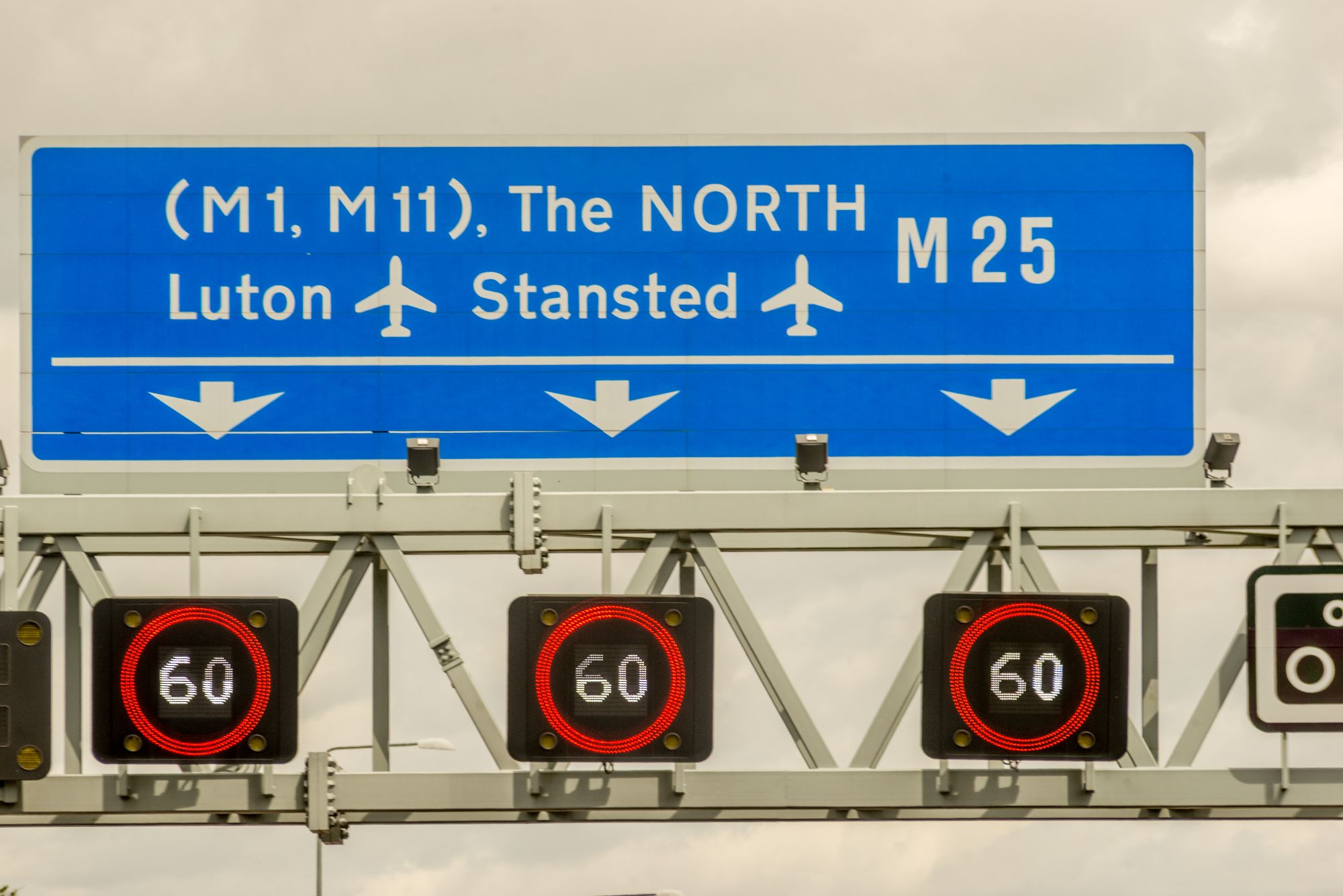
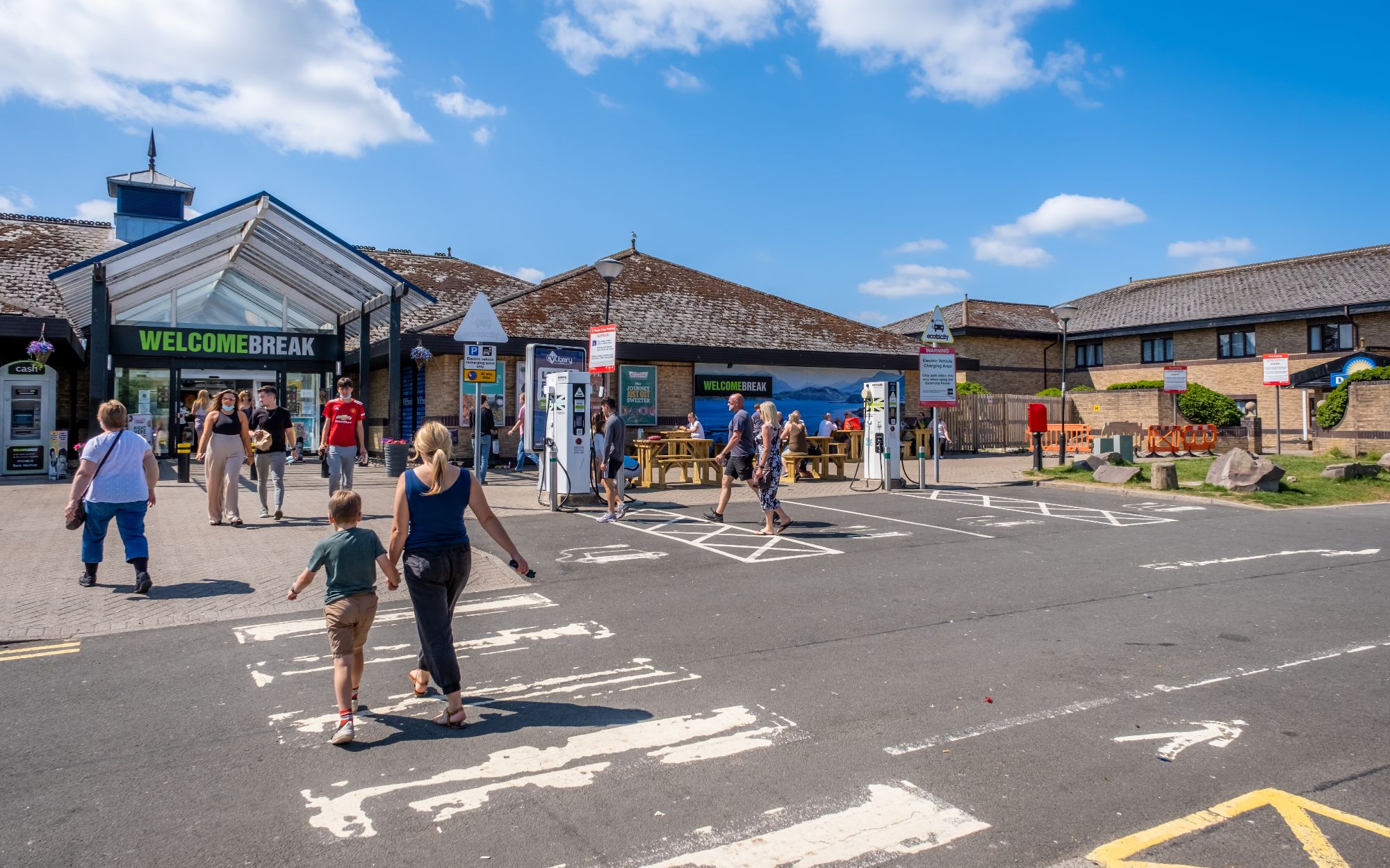
Taking A Break on Motorways
The monotony of driving on motorways and other high-speed roads can make you feel sleepy.
To minimise the risk, ensure you are fit to drive and take breaks.
Service areas are located along motorways to allow you to take breaks and to obtain refreshments.
Refreshment and rest facilities on the local road network may also be accessible from motorway exits.
Signs On a Motorway
AMBER SIGNS
On older motorways, you may find that the signs above the motorway
Amber flashing lights. These signals warn of a hazard ahead. You should
- reduce your speed
- be prepared for the hazard
- only increase your speed when you pass a signal that is not flashing, or a sign displaying a national speed limit or the word ‘END’, and you are sure it is safe to do so.
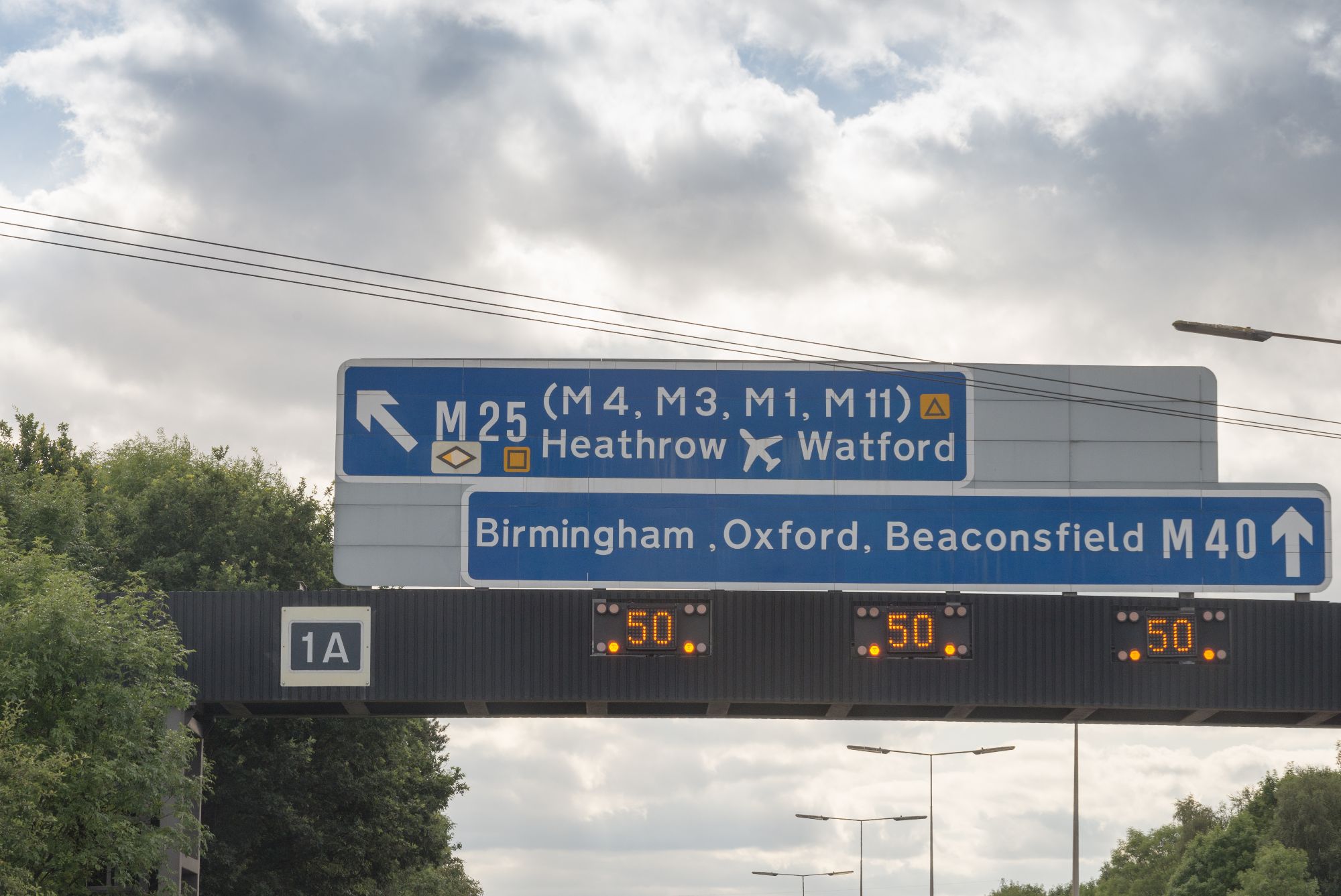
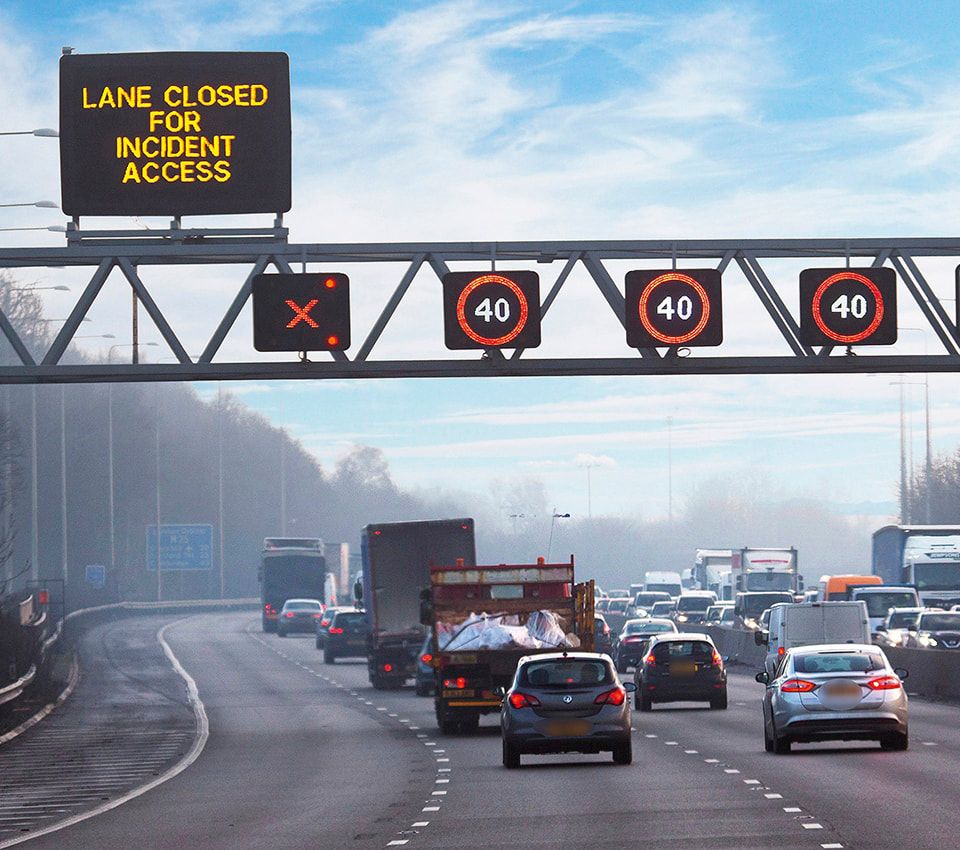
Speed Limit Signs on a Motorway
Where as an amber speed sign on a motorway is an advice sign,
On a smart motorway any speed limit sign with a red circle around it is an actual speed limit command.
Therefore to go above it means you are breaking the speed limit and can be fined and receive points on your driving licence (Yes even as a learner!!)
A Red X on motorway signs
Red flashing light signals and a red ‘X’ on a sign identify a closed lane in which people, stopped vehicles or other hazards are present. You
- MUST follow the instructions on signs in advance of a closed lane to move safely to an open lane
- MUST NOT drive in a closed lane. A sign will inform you when the lane is no longer closed by displaying a speed limit or the word ‘END’
- there can be several hazards in a closed lane
- emergency services and traffic authorities use closed lanes to reach incidents and help people in need
- where the left lane is closed at an exit slip road, this means that the exit cannot be used.
Where red flashing light signals and closure of all lanes are shown on a sign, the road is closed. You MUST NOT go beyond the sign in any lane or use the hard shoulder to avoid the road closure unless directed to do so by a police or traffic officer.

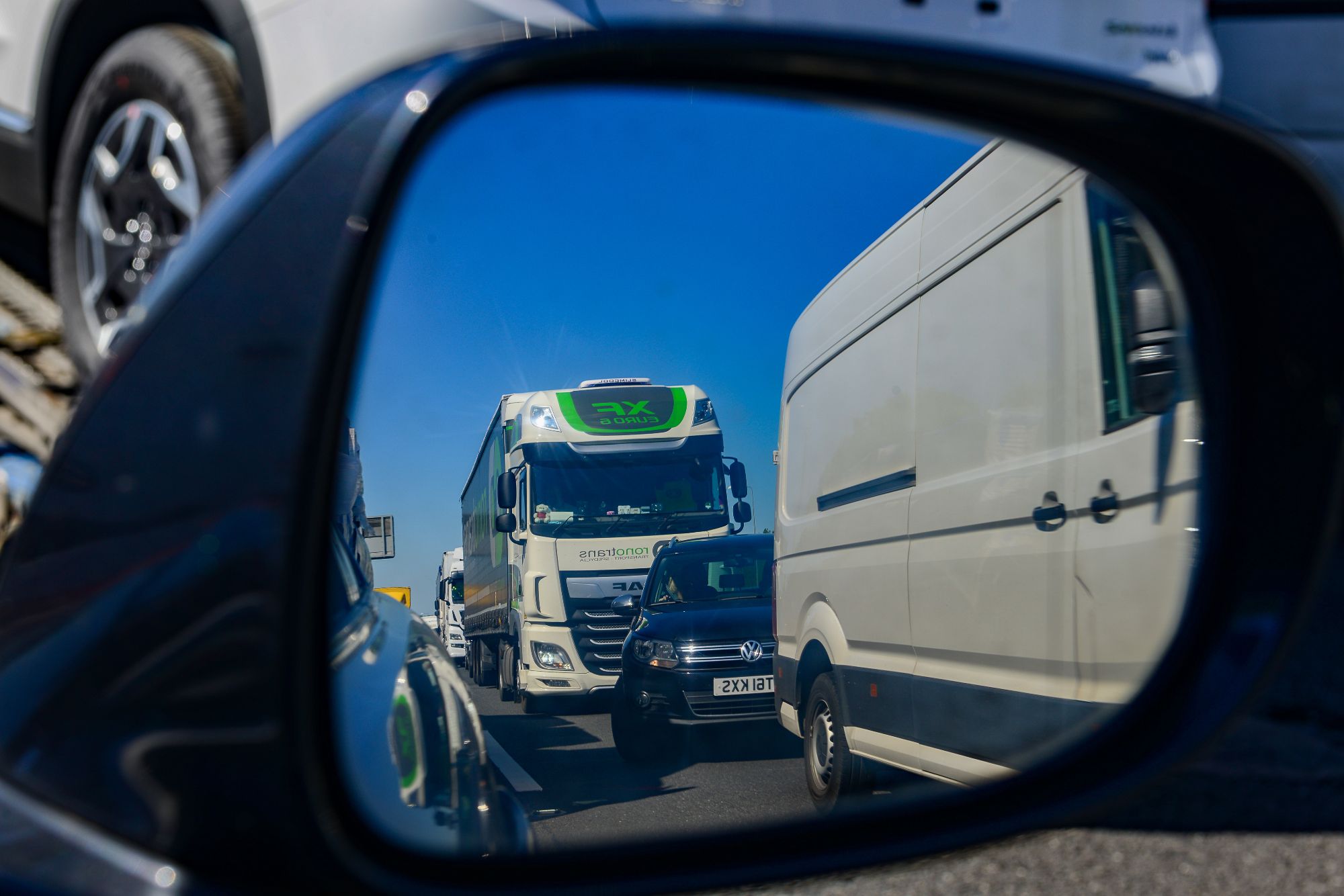
Using Mirrors On A Motorway
Keep in the left lane unless overtaking.
- If you are overtaking, you should return to the left lane when it is safe to do so
- Be aware of emergency services, traffic officers, recovery workers and other people or vehicles stopped on the hard shoulder or in an emergency area. If you are driving in the left lane, and it is safe to do so, you should move into the adjacent lane to create more space between your vehicle and the people and stopped vehicles.
Moving To A Lane On Your Left
Remember at this point you could have a car or lorry on the left side of you doing 60, 70 mph or even more
So take time BEFORE you decide to switch lanes to check the centre and left mirror and even have a quick glance to your right
Just to make sure it is safe to exit
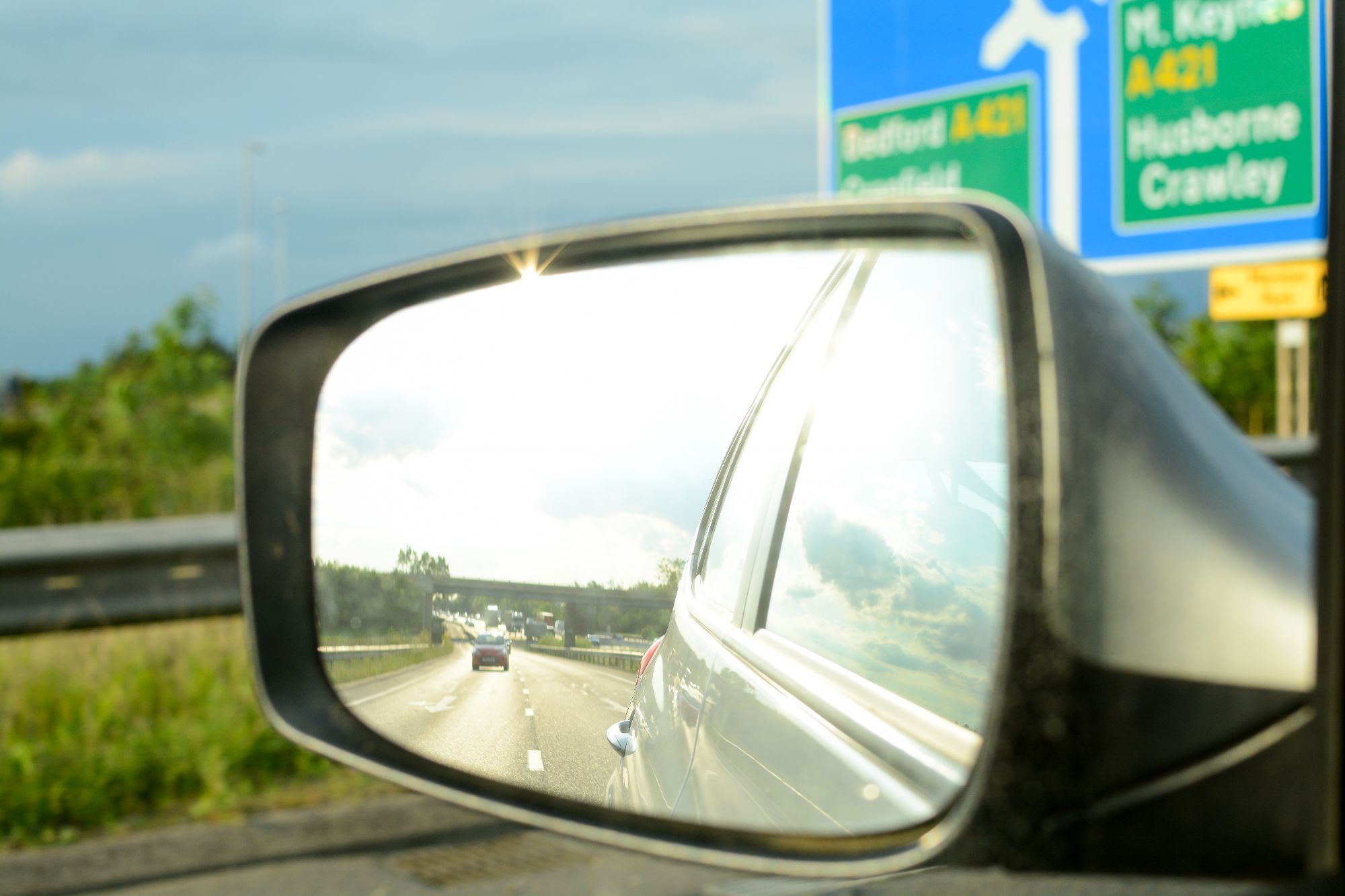
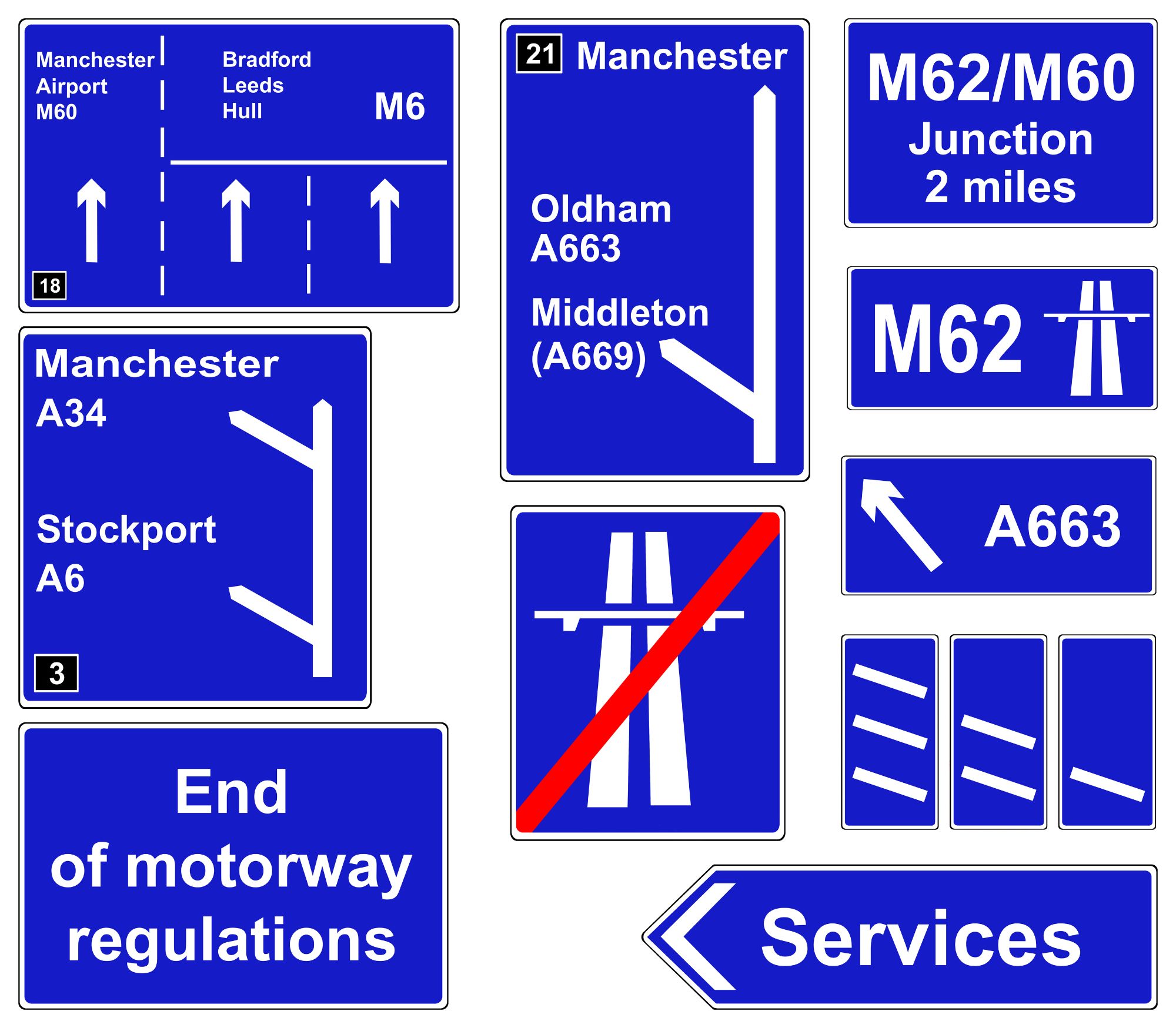
Exiting the Mototrway
Keep a close look out for any approaching signs that will let you know that a motorway exit is approaching.
The small black square in the bottom left hand side of the sign lets you know the junction number that you are approaching
The countdown markers - the white diagonal lines - let you know that you are now just 300, 200 and 100 yards from your exit
Contact Us
Hours
Monday - Friday:
09:00 am - 6:00 pm
Saturday - Sunday:
10:00 am - 3:00 pm
